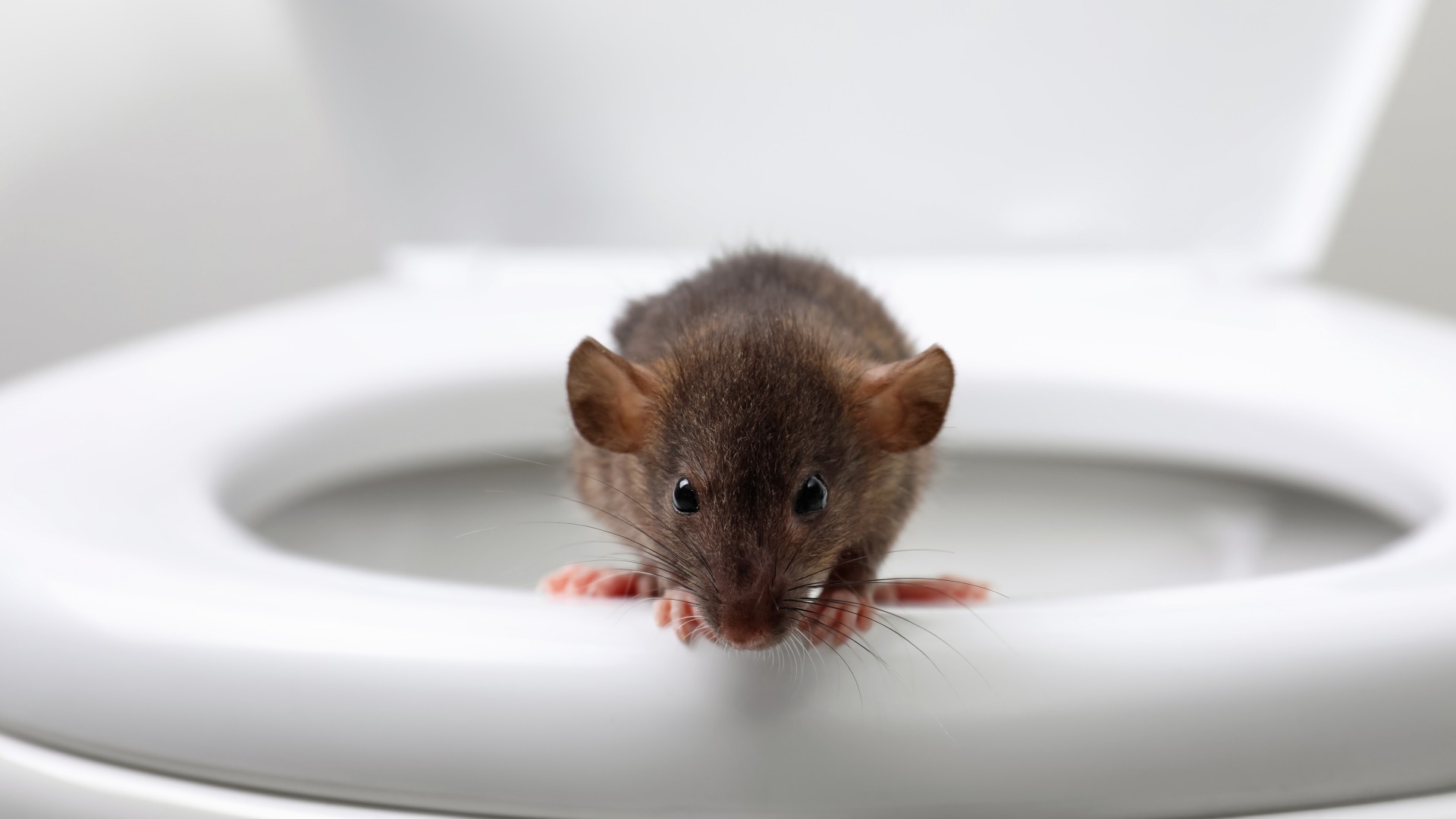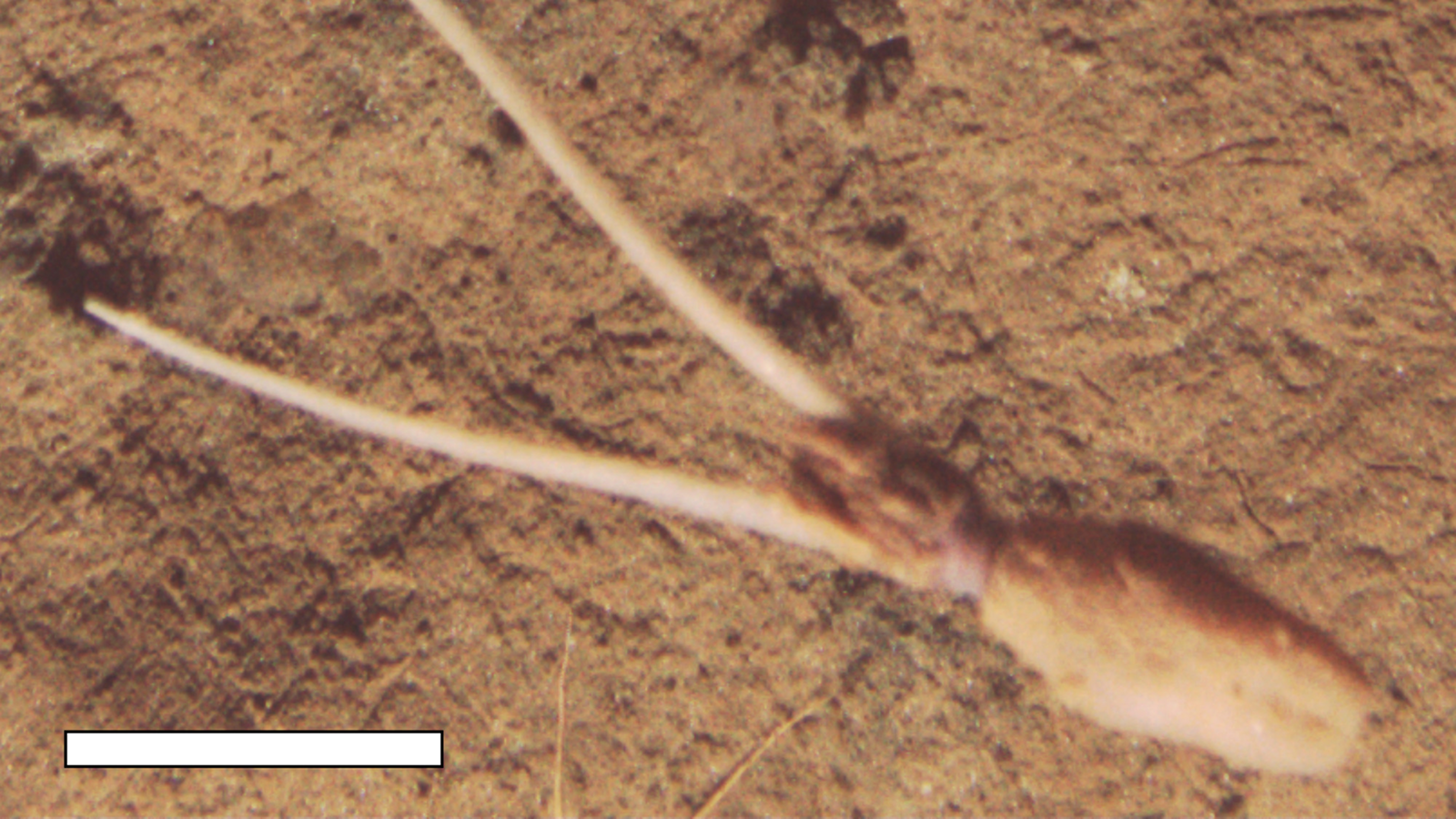Bite from toilet rat hospitalizes man in Canada
Doctors believe the man was likely infected with bacteria in the rat's mouth.

In an unusual new medical case, a man in Canada was hospitalized with a severe bacterial infection after being bitten by a rat that was lurking in his toilet.
The 76-year-old visited the emergency department at a hospital in Montréal, Quebec, after encountering a rat in his toilet bowl. He was trying to remove the rodent when the critter bit two of his fingers. At the emergency department, doctors gave him basic wound care, as well as a tetanus booster.
However, about 18 days later, the man was back in the hospital having experienced fever, headaches and abdominal pain for several days. By this time, although his finger wounds had mostly healed, the man's blood pressure was low and his heart was beating very fast.
Initial blood tests showed that the patient's kidneys were damaged and that his blood had a low number of platelets — the fragments of cells that form clots to prevent or stop bleeding. Doctors admitted him to the intensive care unit (ICU) as he showed signs of multi-organ dysfunction and sepsis, a dangerous phenomenon in which an infection sends the immune system into overdrive.
Related: New species of bacteria discovered after man is bitten by stray cat
To uncover the cause of the man's illness, doctors took and analyzed blood and urine samples. These revealed that he had an infectious disease called leptospirosis, according to a report of the case, published in January in the Canadian Medical Association Journal.
Leptospirosis, also called Weil's disease, is caused by bacteria in the genus Leptospira. Globally, it is the most common infection caused by germs that are transmitted between animals and humans. Each year, more than 1 million cases of leptospirosis are reported worldwide, resulting in almost 60,000 deaths. Around 100 to 150 cases occur in the U.S. annually.
Get the world’s most fascinating discoveries delivered straight to your inbox.
People with leptospirosis most often develop mild symptoms, such as fever, headache and muscle pain, around five to 14 days after being infected. Other common symptoms include vomiting, diarrhea, abdominal pain, cough and sometimes a skin rash. The infection's symptoms can often be confused with those of other diseases, such as the flu (influenza) and dengue fever.
Approximately 10% of cases become severe and can lead to multi-organ dysfunction and death.
Following treatment with antibiotics, most people recover in a few days or weeks, and prompt treatment can lessen the duration and severity of the disease. The death rate among those with severe disease is about 5% to 15%, but for the subset who develop severe bleeding in the lungs, that rate jumps to 50%.
The man in the recent case was given antibiotics, as well as other treatments to address his kidney damage and low platelet levels. After a few days, his symptoms improved and he was discharged from the ICU.
The spiral-shaped Leptospira bacteria typically infect people either when a person comes into contact with the urine of infected animals or with contaminated soil or water. Often, the disease is carried by farm animals, such as cattle, pigs or horses, but it can also be spread by wild animals like racoons, and also by pets such as dogs. Infected animals may show no symptoms of disease.
Leptospira bacteria enter the body through broken skin — caused by a cut or scratch, for example — or through the eyes, nose and mouth. The risk of outbreaks is exacerbated by hurricanes or floods, which can expose people to contaminated water. Drinking contaminated water can also lead to infection. Person-to-person transmission is rare but possible.
Rats infected with Leptospira don't shed spores of the bacteria in their saliva, only in their urine, the case report authors wrote in the report. So it's possible that the rat's mouth had just been temporarily contaminated with urine containing Leptospira, which then entered the man's body through the puncture wound caused by the rodent's bites.
This mode of transmission is uncommon, compared with other possible routes.
This article is for informational purposes only and is not meant to offer medical advice.
Ever wonder why some people build muscle more easily than others or why freckles come out in the sun? Send us your questions about how the human body works to community@livescience.com with the subject line "Health Desk Q," and you may see your question answered on the website!

Emily is a health news writer based in London, United Kingdom. She holds a bachelor's degree in biology from Durham University and a master's degree in clinical and therapeutic neuroscience from Oxford University. She has worked in science communication, medical writing and as a local news reporter while undertaking NCTJ journalism training with News Associates. In 2018, she was named one of MHP Communications' 30 journalists to watch under 30.


